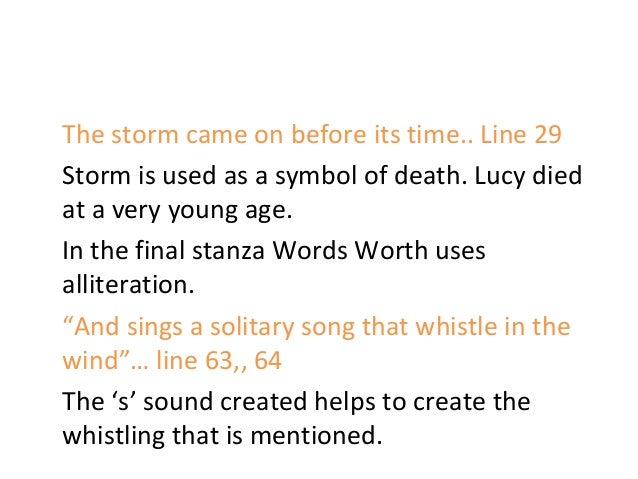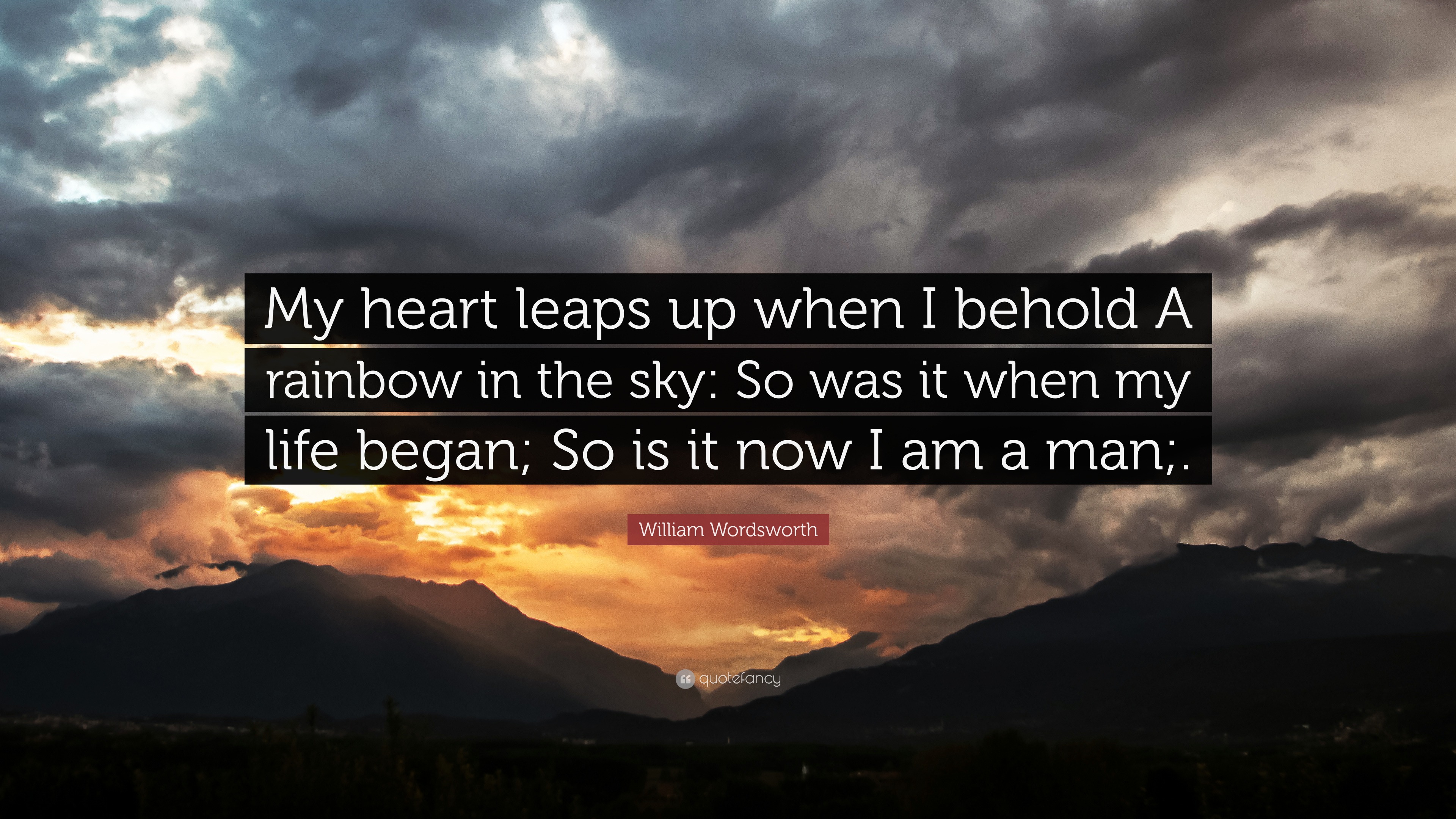

Similarly, those very ‘plots of cottage-ground’ – which sound orderly given the presence of the word ‘plots’, suggesting careful planning – ‘lose themselves’ among the surrounding ‘woods and copses’. Wordsworth may imagine that the smoke billowing up from those cottages is from hermits living entirely separate from society in caves in the hills and woods, but he knows that this is fancy, rather than reality.

One way in which ‘Lines Written a Few Miles Above Tintern Abbey’ might be regarded as a transitional poem between earlier nature poetry of the century and the Romantic movement (which Wordsworth was ushering in with his poem) is in the way nature, in this poem, hovers somewhere between order and chaos: it is not quite tamed, but nor is it completely wild either. One of the chief differences between earlier eighteenth-century nature poets and Romantics like Wordsworth’s is that earlier poets, especially the Augustans, liked their nature to be orderly: hedgerows should be neat, lines should ideally be straight, and things should be brought under the control of man. But Wordsworth brought out what was latent in Cowper and Thomson and gave it a new sense of importance and power. He was building on the work of earlier, pre-Romantic (or perhaps proto-Romantic) poets who wrote about the countryside, such as James Thomson (author of The Seasons) and, most notably, William Cowper. Of course, this is not to claim that Wordsworth invented the idea of the meditative lyric. ‘Lines Written a Few Miles Above Tintern Abbey’ was the most notable longer poem in the collection which took as its main focus not story but thought, feeling, memory, and introspection. Many of the other most famous poems from Lyrical Ballads – Wordsworth’s own ‘We Are Seven’, ‘The Idiot Boy’, ‘Simon Lee’, and ‘Anecdote for Fathers’, not to mention Coleridge’s long narrative poem ‘The Rime of the Ancient Mariner’ – are narratives, not meditative lyrics. Here it’s worth remembering the significance of the title of the collection to which ‘Lines Written a Few Miles Above Tintern Abbey’ was a last-minute addition: ‘ballads’ are poems which tell a story and have some narrative interest, a quality which ‘Lines Written a Few Miles Above Tintern Abbey’ notably lacks. The features we now most readily associate with Romantic poetry – the lyric focus on the personal thoughts and feelings of the poet, and the way the individual links with his or her natural surroundings – were brought to new heights in this poem. ‘Lines Written a Few Miles Above Tintern Abbey’ represented a turning-point in Wordsworth’s career, and in the development of English Romanticism. ‘Lines Written a Few Miles Above Tintern Abbey’: analysis He entreats Dorothy to remember this, and to remember their visit to the Wye valley in the years to come.
WILLIAM WORDSWORTH WE ARE SEVEN ANALYSIS FULL
Wordsworth goes on to say that Nature – personified as female, as so often in poetry – is full of ‘blessings’, no matter what life may bring. Because they’re brother and sister and have spent their lives together, looking at Dorothy reminds Wordsworth of the boy he was: she is a short-cut back to his childhood. In the poem’s final verse paragraph, Wordsworth addresses his companion with him by the banks of the river Wye: his sister, Dorothy. My dear, dear Sister! and this prayer I make, My former pleasures in the shooting lights The language of my former heart, and read

My dear, dear Friend and in thy voice I catch Of this fair river thou my dearest Friend, In addition, Africans have proved being faithful believers in the God’s decision and fates because they did not resist slavery, slave trade or racism but show tolerance, piety and forgivingness and endurance of every mistreatment and oppression.If I were not thus taught, should I the more This research has found that the bone of contention of slave trade and racial discrimination is colour and that only the whites who introduced and abolished slave trade and racial discrimination. The researcher has used the formalistic and deconstructionist approaches to analyse and interpret their poems: William Cowper, Hannah More, by William Blake, William Wordsworth, Samuel Taylor Coleridge, Phyllis Wheatley, Laurence Dunbar, Claude McKay, Countee Cullen and Langston Hughes. Accordingly, this thesis focused upon ten antislavery poets. The major problem of this study is the English anti-slavery poetry rhetoric from 1780 to 1865 that leads to abolishment of slavery, slave trade and racial discrimination in the United Kingdom, its domains and America.


 0 kommentar(er)
0 kommentar(er)
